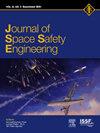基于克里金法的碎片撞击区高效计算方法
IF 1
Q3 ENGINEERING, AEROSPACE
引用次数: 0
摘要
为了预防或评估发射风险,对发射装置的撞击区进行评估是一个关键因素。法国国家空间研究中心(CNES)目前使用多种方法预测撞击区,但保真度最高的方法是使用一系列计算成本高昂的蒙特卡罗模拟。这一过程非常耗时,计算时间可能会变得令人望而却步。目前正在研究一种名为克里金法或高斯过程回归法的机器学习方法,作为加快影响区评估的潜在途径。本文在不同的飞行阶段测试了这种基于克里金法的方法,并从处理时间、准确性和通用性方面评估了该方法在估计碎片撞击区方面的潜力。本文章由计算机程序翻译,如有差异,请以英文原文为准。
A Kriging-based method for the efficient computation of debris impact zones
To prevent or assess launch risk, evaluation of launchers impact zones is a key element. Several methods are currently used to predict impact zones at the French space agency (CNES), but the highest-fidelity method uses a series of computationally costly Monte Carlo simulations. This process can be very time consuming and the computation time can become prohibitive. A machine learning method called Kriging or Gaussian Process Regression is studied as a potential avenue to speed up the impact zones evaluation. This Kriging-based method, is tested in this paper in different flight phases and its potential for estimating debris impact zones is evaluated in terms of processing time, accuracy and genericity.
求助全文
通过发布文献求助,成功后即可免费获取论文全文。
去求助
来源期刊

Journal of Space Safety Engineering
Engineering-Safety, Risk, Reliability and Quality
CiteScore
2.50
自引率
0.00%
发文量
80
 求助内容:
求助内容: 应助结果提醒方式:
应助结果提醒方式:


